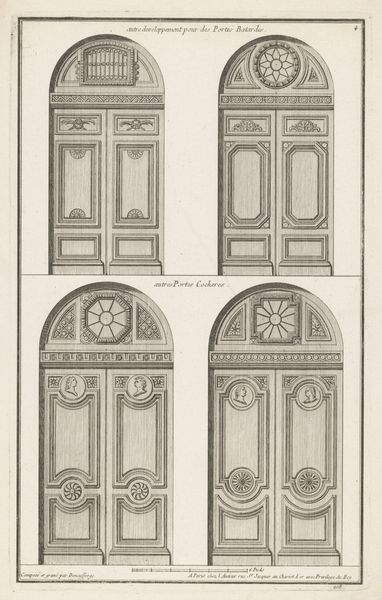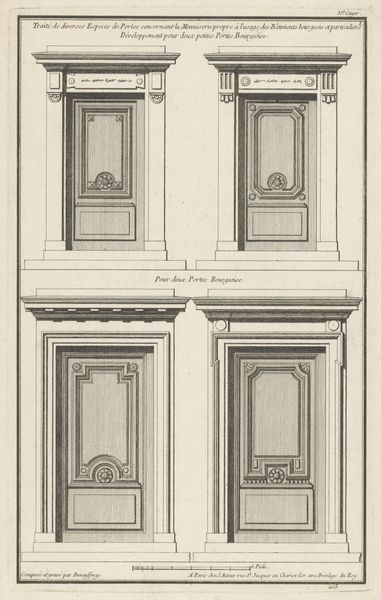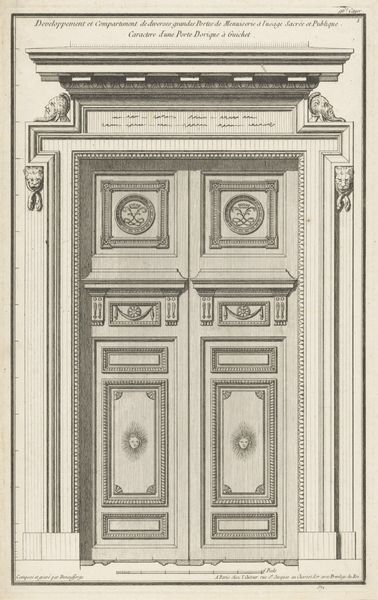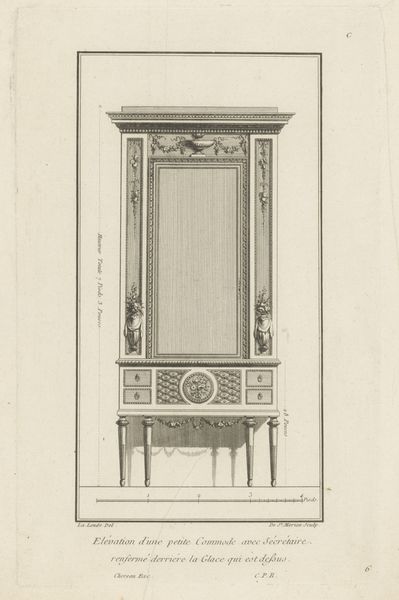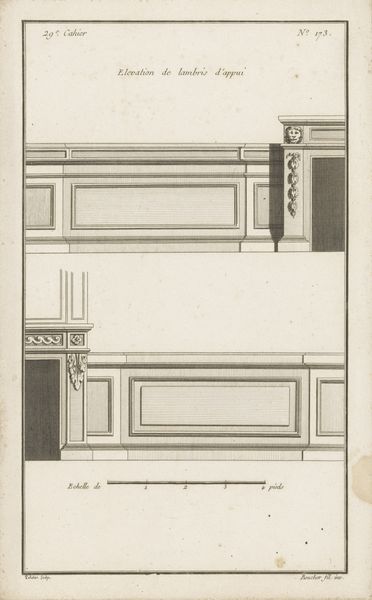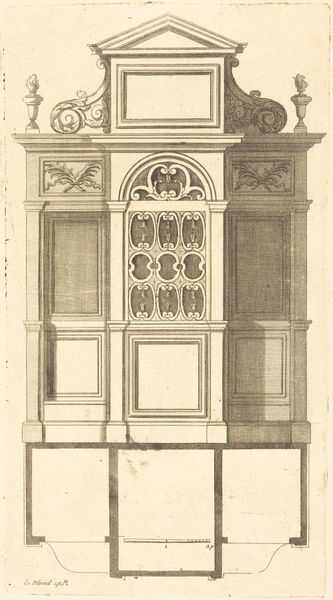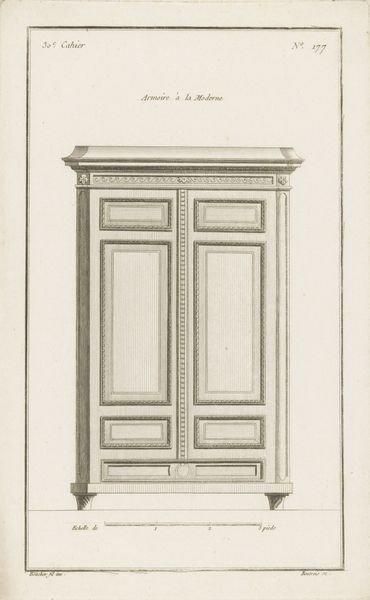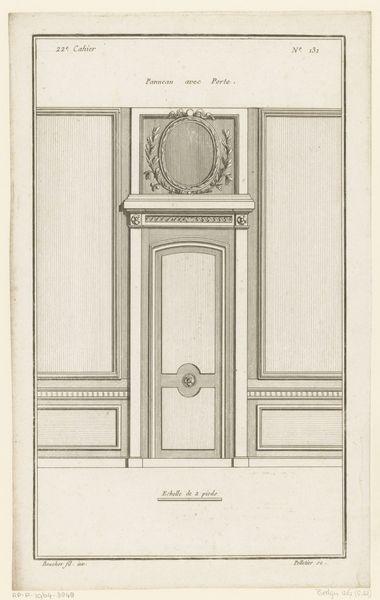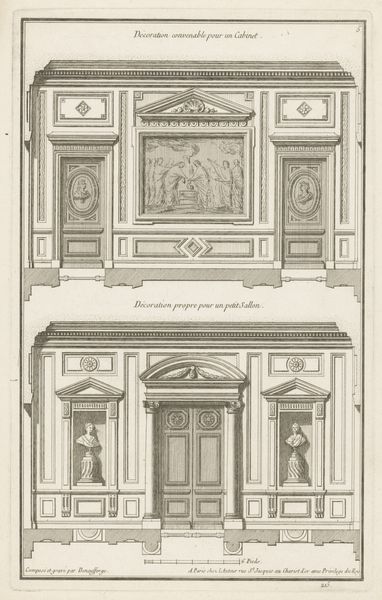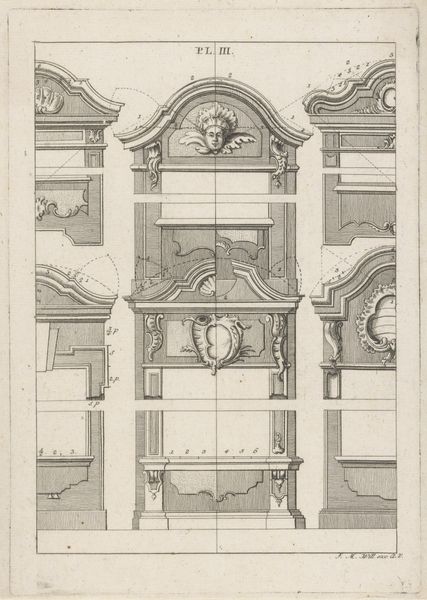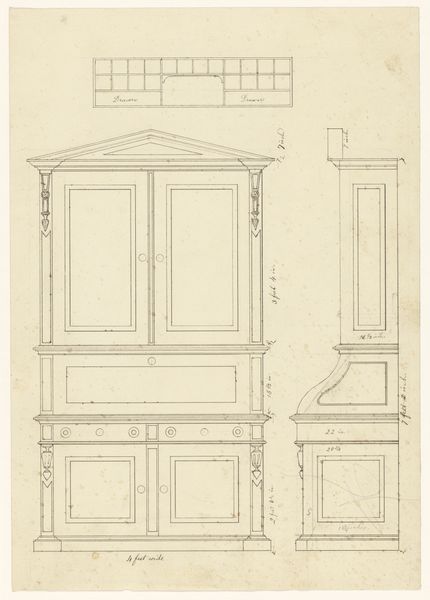
Vier poorten met rozetten, hoornen des overvloeds en guirlandes 1760
0:00
0:00
jeanfrancoisdeneufforge
Rijksmuseum
drawing, print, engraving, architecture
#
drawing
#
neoclacissism
# print
#
form
#
geometric
#
line
#
engraving
#
architecture
Dimensions: height 361 mm, width 228 mm
Copyright: Rijks Museum: Open Domain
Curator: This is "Four Gates with Rosettes, Cornucopias, and Garlands" by Jean-François de Neufforge, dating from around 1760. It’s an engraving, part of a larger series of architectural designs. Editor: They certainly look…imposing. A little intimidating, even. So rigid and symmetrical. Is this about celebrating power, perhaps controlling who goes in and out? Curator: In many ways, yes. Neufforge was known for his architectural publications, which were essentially pattern books for builders and architects. This particular print highlights the material aspect of design, the specifics of doors meant for grand entrances, reflecting the opulence and the material resources available at the time. Editor: It strikes me how these designs emphasize exclusivity. We are talking about a society deeply structured by class; access was not a given. Each of these doorways makes a statement about social position, wouldn't you agree? Curator: Precisely. And it’s fascinating to consider the labor involved in producing both the designs themselves—the engraving process—and then the physical construction. The cost of materials alone would dictate a certain social standing. Consider the skilled labor that would go into each element – carving, joinery. These doors weren't mass-produced. Editor: The way these gates are ornamented, the rosettes and garlands...It evokes classical themes while making a powerful statement of the patron's wealth. These emblems certainly serve as a form of propaganda, almost as shields asserting privilege. Curator: Indeed. The architectural drawings weren't just functional diagrams, but potent indicators of economic capacity and status in 18th-century society. Neufforge captured an ideal. Editor: I am struck by the lasting power of these symbols. Examining historical works such as this gives insight to architectural choices and what they may truly reflect about cultural values. Curator: Reflecting on this image really gives us a tangible reminder that art extends far beyond simple aesthetics. Editor: I find these considerations offer insights into both how we value material display throughout history. It's not always what's within.
Comments
No comments
Be the first to comment and join the conversation on the ultimate creative platform.
